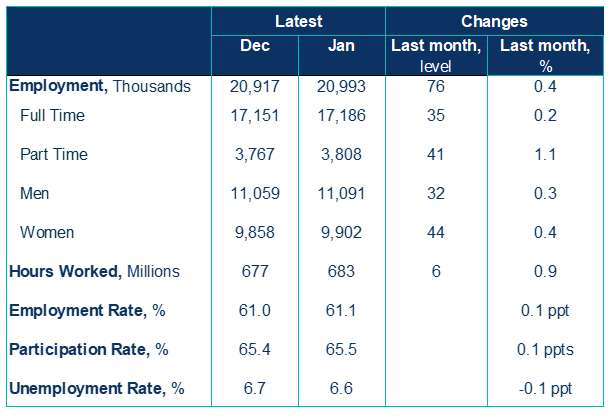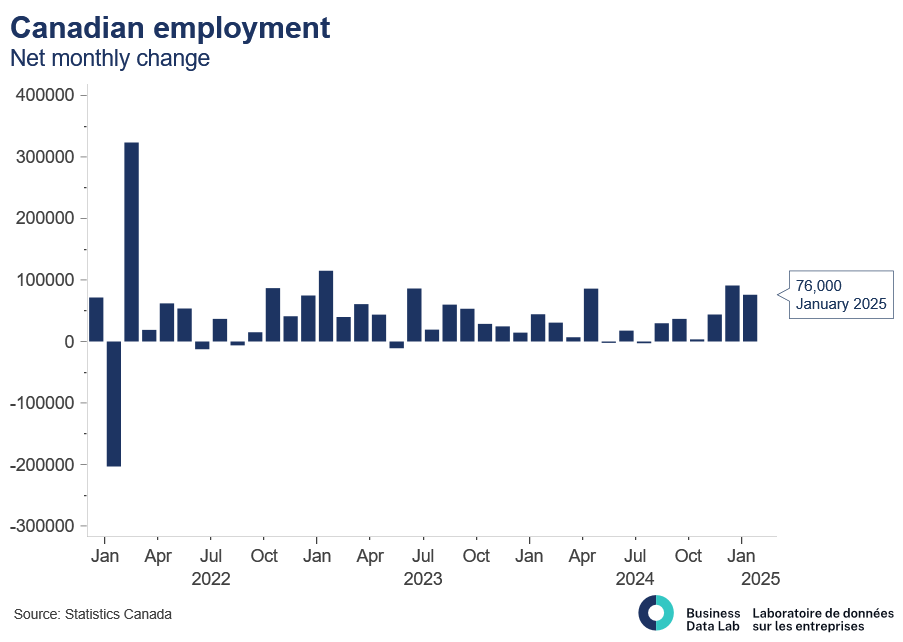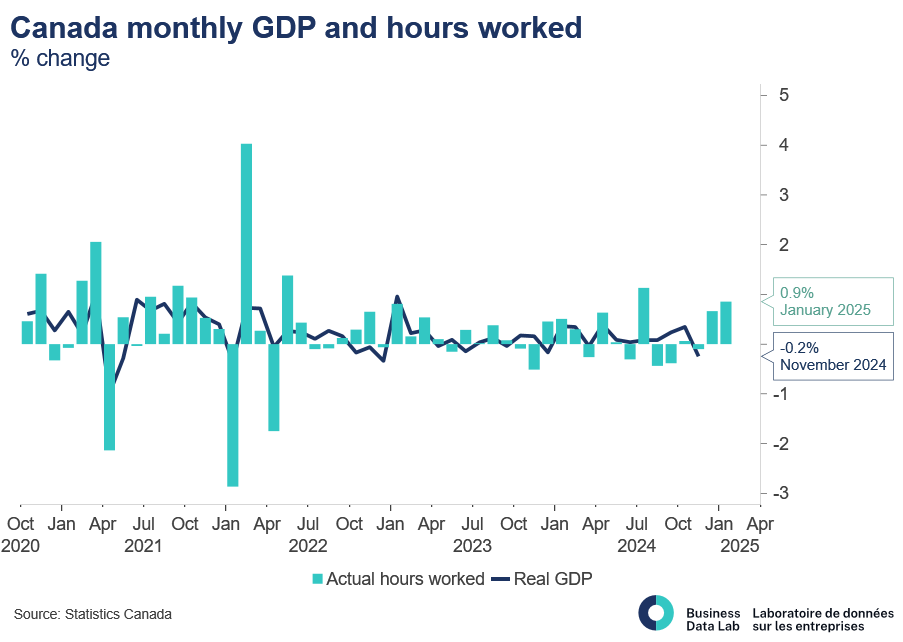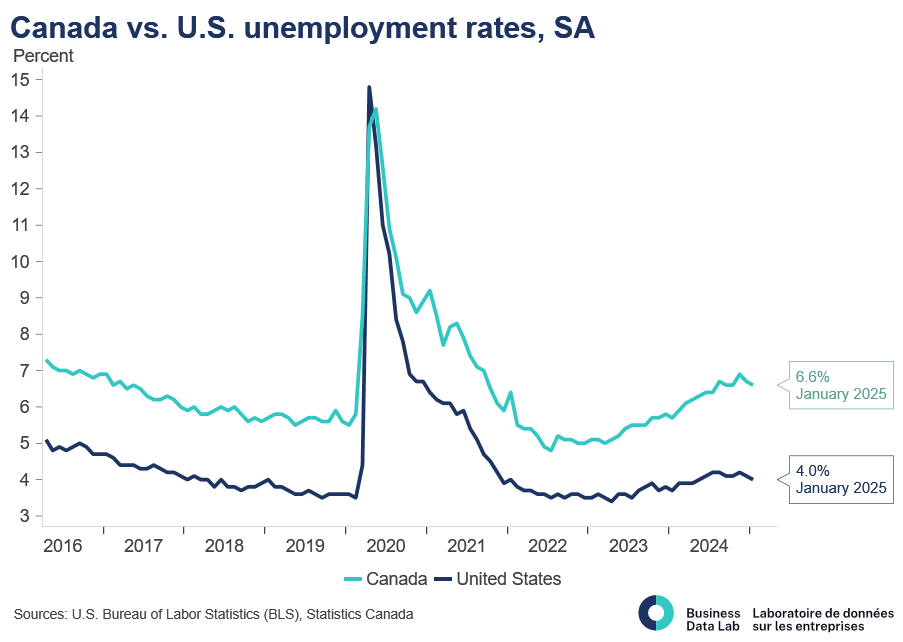Blog /
Labour Force Survey January 2025: Defying the odds, Canada’s labour market continues to add jobs
After strong job growth in December, Canadian employment had another impressive showing in January, adding 76,000 more jobs.

“Wow, this represents another remarkable monthly showing for Canada’s job market against the backdrop of Trump’s tariff threats. Employment has been heating up over the past three months and it’s reassuring to see gains in private-sector jobs, full-time work, and for those in the core working age group.
The strong showing for hours worked in January provides a solid start for the first quarter’s GDP numbers ─ and here it’s possible that the manufacturing sector benefitted from a push by U.S. importers to build their inventories before potential tariffs. The Bank of Canada will likely see slowing wage growth as a sign that inflation pressures coming from the labour market are generally contained at this time, despite the recent hiring push.
Of course, if Trump’s tariffs are enacted, this could be a short-term burst in activity, followed by a major shock to Canada’s economy. In that case, the Bank would face a challenge with the potential for higher prices and a much weaker economy.
KEY TAKEAWAYS
- After strong job growth in December (91,000 jobs), Canadian employment had another impressive showing in January, adding 76,000 more jobs (+0.4%). This was well above (3x) market expectations for a gain of a more modest 25,000. Surprisingly, with this recent 3-month hiring burst, employment is now nearly back at its pre-pandemic trend.
- The private sector led the way, adding 57k jobs. Gains were concentrated in the core working age group (25-54 years old) and roughly split between full- and part-time positions.
- The unemployment rate ticked down 0.1 ppts again and now sits at 6.6%, again beating market expectation (6.8%).
- Total hours worked rose 0.9% on the month, and were up a respectable 2.2% on a year-over-year basis, which provides solid footing for the first quarter’s GDP numbers.
- Average hourly wages were up 3.5% year-over-year, a slight deceleration from the 4.0% recorded in December, as wage growth continues to ease.
- By industry, employment gains were led by manufacturing (+33k, 1.8%, which could be benefitting from a rush by U.S. importers to front run the tariffs) and professional services (+22k, 1.1%).
- Regionally, provincial employment increased in three provinces: Ontario (+39K; +0.5%), British Columbia (+23K; +0.8%) and New Brunswick (+2.9K; +0.7%), and was essentially unchanged in other provinces in January.
SUMMARY TABLE

CHARTS

















